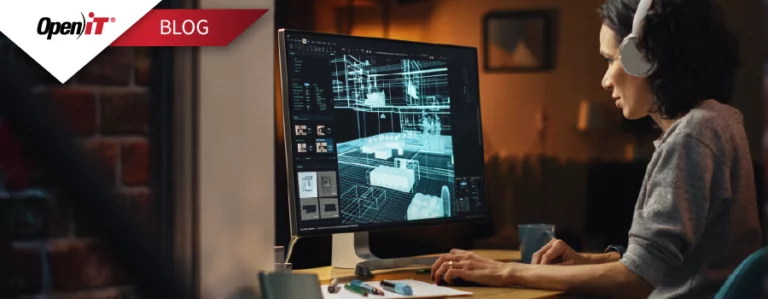During our first session in our Autodesk® Webinar Series, our Business Solutions Consultant, Linda Cole, talked about the recent changes in Autodesk licensing and how these can affect companies that are dependent on Autodesk products. If you’re worried about managing your costs and ensuring that your company remains software compliant throughout this transition, it is crucial that you analyze your current portfolio so you can make the necessary adjustments to your Autodesk licenses.
In this blog, we will focus on two ways to achieve an optimized licensing position – maximizing your token flex licenses and converting your concurrent licenses to either named user subscription or Autodesk Flex licenses.
But First, Start Collecting Data
Start big, finish small. Don’t confine your data collection to a limited area of your organization. Starting big means ensuring that you have visibility on all licenses at an enterprise level. On the other hand, finishing small means, at the end of your data collection, you can drill into your information down to the regional, departmental, and user level. At a minimum, your data should include a list of applications that you currently own, the quantity of software licenses, the type of licensing (stand alone, Token-Flex, concurrent, Named User Subscription and Autodesk Flex), the locations where these licenses are authorized to run, and the expiration dates, product owners and costs. This matrix will allow you to quickly identify not only what you have but what is urgent vs important in your analysis.
Two Ways to Optimize Your Autodesk Licenses
Data is an asset, but it may become a liability if not understood properly. Here at Open iT, we take your software usage data as well as many other data points and turn them into actionable data.
-
Maximizing your Token Flex Licenses
Enterprises wanting to optimize the use of their Token Flex licenses, start with reviewing your organization’s usage trends. Do not rely only on vendor reporting because you need more data to truly understand your license usage and needs. We recommend looking at your token usage month over month and year over year. By monitoring your token consumption on a regular basis, you can check your burn rate per month and see if there’s a recurring pattern. That’s your first action point right there – look at your consumption cycle and prevent shortage or overage of tokens.
Another action point can be taken from heat maps. A common situation in global enterprises occurs when the employees who heavily use the product are in a different location than the location of the license servers. This creates a mismatch in time zones and costs you money. Simply understanding your usage, updating your time zones can save you between 2% and 10%. In addition, you can use heat maps as an opportunity to promote responsible usage among end-users as it shows the licenses that remain checked out outside office hours.
-
Converting your Concurrent Licenses to Named User or Autodesk Flex
Converting some of your concurrent licenses to either named user subscription or Autodesk Flex licenses is another strategy that can bring significant savings to your business. In your next license renewal, your vendor may give recommendations on what you should purchase. And yes, you can take their suggestions, but why not dig a little deeper first in your software usage?
The first thing you can do is to review your application usage and identify the applications that have 0% utilization. Stop paying for unused assets. You can then convert the costs of these licenses to another product. Now when it comes to changing your license type to named user subscription, we recommend tracking your maximum available licenses, maximum licenses in use, and distinct user count. You can also track the distinct user days if you want to consider converting to tokens instead of named user subscriptions.
So, we did bring up converting licenses as an action point. However, double check to see if you need to maintain any of your perpetual licenses (unsupported) and if you have existing projects that are running on old versions of your application. Also, make sure that you have a plan in place to train users who need to upgrade to a newer version to minimize work disruption.
Conclusion
Keeping up with the changes in Autodesk licensing can be cumbersome and complicated. There was another price increase just in the last week. However, with the right data and system in place, you can start gathering meaningful insights from your Autodesk license usage. Start creating strategies that can optimize your licensing position. Find what works for your organization – schedule a 30-minute meeting with Linda or any of our Business Solutions Consultants today.
You can also sign up for the last session of our Webinar Series that is scheduled on April 28, 2022, to learn how you can further maximize your ROI on software investments by adopting a layered approach to license optimization.






